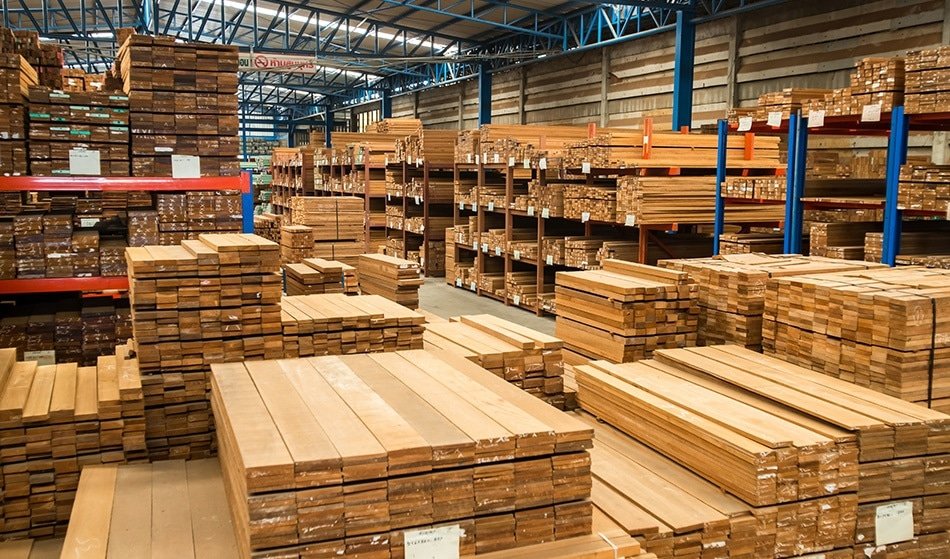Wood seasoning is the key to maximizing the strength and durability of any wooden structure. Properly seasoned wood helps prevent warping, cracking, and shrinking, ensuring longevity in your projects.
By understanding the science behind wood seasoning and following best practices, you can unleash the full potential of this natural material.
In this blog, we delve deep into the art of wood seasoning, exploring techniques, tips, and expert advice to help you master this essential process. Let’s embark on a journey to transform your woodworking projects with seasoned wood.
Exploring the Art of Wood Seasoning: Enhancing the Strength and Beauty of Your Wood
Welcome, curious wood enthusiasts! Today, we embark on a fascinating journey into the world of wood seasoning. Whether you are a novice DIYer or a seasoned woodworker, understanding the intricacies of wood seasoning can significantly impact the quality and durability of your woodworking projects. So, grab a cup of your favorite beverage and let’s delve into the captivating realm of wood seasoning.
The Basics of Wood Seasoning
Wood seasoning, also known as wood curing or wood drying, is a crucial process that involves reducing the moisture content of freshly cut wood to enhance its strength, stability, and workability. When trees are harvested, they contain a significant amount of water, which must be carefully removed to prevent warping, cracking, and decay in the final wood products.
Why is Wood Seasoning Important?
Imagine building a beautiful wooden table only to have it warp or split a few weeks later. This is where wood seasoning comes to the rescue! By allowing the wood to properly dry and acclimate to its environment, you are ensuring that your woodworking creations stand the test of time.
Properly seasoned wood is not only more stable and less prone to deformation but also exhibits enhanced strength and resistance to pests and decay. In addition, seasoned wood is lighter, making it easier to work with and reducing the overall weight of your projects.
Types of Wood Seasoning
There are two primary methods of wood seasoning: air drying and kiln drying. Let’s explore each method in more detail:
Air Drying
Air drying is one of the oldest and most traditional methods of wood seasoning. In this process, freshly cut wood is stacked and exposed to the natural elements, allowing moisture to evaporate slowly over time. Air drying is a cost-effective and environmentally friendly way to season wood, although it can be a slower process compared to kiln drying.
Kiln Drying
Kiln drying is a more controlled and rapid method of wood seasoning that involves placing the wood in a specialized kiln chamber where temperature, humidity, and airflow are carefully regulated. Kiln drying accelerates the drying process, allowing wood to reach the desired moisture content in a fraction of the time needed for air drying. While kiln drying is faster, it may result in higher energy costs and potential loss of some wood character compared to air drying.
The Wood Seasoning Process
Regardless of the method chosen, the wood seasoning process typically involves several key steps:
1. Initial Air Drying:
After harvesting, the logs are usually left to air dry for a period of time to reduce their initial moisture content. This step helps prevent excessive checking and cracking during the subsequent drying process.
2. Kiln Drying:
If kiln drying is preferred, the wood is then transferred to the kiln chamber, where it undergoes a series of drying cycles under controlled conditions. The temperature and humidity levels are gradually adjusted to ensure a gradual and thorough drying process.
3. Moisture Content Testing:
Throughout the seasoning process, moisture content is regularly monitored using moisture meters to ensure that the wood reaches the desired level of dryness. Proper moisture content is essential to prevent wood deformation and to ensure the longevity of the final wood products.
Tips for Successful Wood Seasoning
Here are some valuable tips to help you achieve optimal results when seasoning wood for your projects:
1. Proper Stacking:
When air drying wood, make sure to stack the lumber with spacers between each layer to allow adequate airflow. This helps prevent mold growth and ensures even drying.
2. Monitoring Moisture Levels:
Regularly check the moisture content of the wood using a reliable moisture meter. This will help you track the progress of the seasoning process and make adjustments as needed.
3. Patience is Key:
Wood seasoning is not a quick process, and rushing it can lead to subpar results. Allow sufficient time for the wood to dry properly, even if it means waiting a bit longer to start your woodworking project.
Benefits of Properly Seasoned Wood
Seasoned wood offers a myriad of benefits that can elevate the quality and longevity of your woodworking projects:
1. Improved Workability:
Seasoned wood is easier to cut, shape, and sand, making it more enjoyable to work with and resulting in smoother, more precise finishes.
2. Enhanced Stability:
Properly seasoned wood is less likely to warp, twist, or shrink, ensuring that your projects maintain their shape and structural integrity over time.
3. Beautiful Aesthetics:
Seasoned wood often features richer colors and more pronounced grain patterns, enhancing the visual appeal of your woodworking creations.
As we conclude our exploration of wood seasoning, we hope you have gained valuable insights into the importance and intricacies of this essential process. By understanding the fundamentals of wood seasoning and following best practices, you can elevate the quality of your woodworking projects and create lasting pieces that stand the test of time.
So, the next time you pick up a piece of freshly cut wood, remember the art of wood seasoning and the transformative impact it can have on your woodworking journey. Happy woodworking!
SEASONED FIREWOOD – WHAT DOES IT MEAN and WHAT DOES IT TAKE?
Frequently Asked Questions
What is wood seasoning?
Wood seasoning is the process of reducing the moisture content in wood to make it suitable for various applications. This helps in preventing warping, cracking, and shrinking of the wood over time.
How is wood seasoning done?
Wood seasoning can be done using two main methods: air-drying and kiln-drying. Air-drying involves stacking the wood in a well-ventilated area for a prolonged period, while kiln-drying uses artificial heat and air circulation to accelerate the process.
Why is wood seasoning important?
Wood seasoning is essential to improve the stability and quality of wood products. Properly seasoned wood is less likely to deform, crack, or experience other issues, making it suitable for furniture making, construction, and other applications.
What are the benefits of properly seasoned wood?
Properly seasoned wood is more durable and less prone to shrinkage or warping compared to green or unseasoned wood. It also allows for better adhesion of finishes and paints, resulting in a more aesthetically pleasing and long-lasting final product.
Final Thoughts
In conclusion, proper wood seasoning is essential for high-quality woodworking. It ensures the wood is stable and less prone to warping or cracking during the crafting process. By allowing the wood to dry slowly and naturally, the end result is a more durable and attractive finished product. Remember, taking the time to properly season your wood will ultimately lead to better woodworking outcomes.


